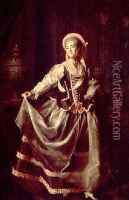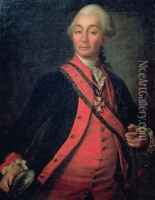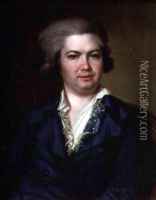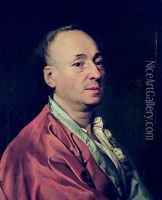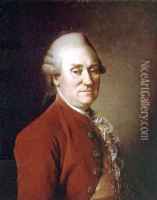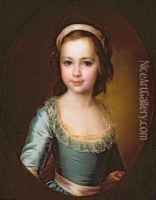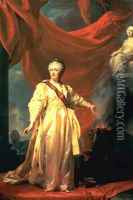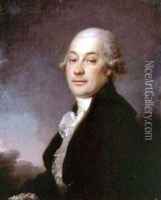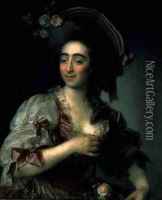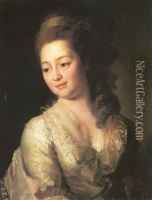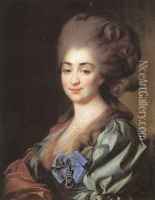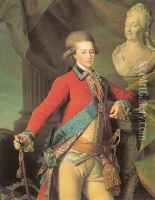Dmitry Levitsky Paintings
Dmitry Grigoryevich Levitsky was a prominent Russian painter and portraitist of the 18th century, known for his significant contribution to Russian art and for his role in establishing the Russian portrait painting tradition. Born on May 9, 1735, in Kyiv, which was then part of the Russian Empire and now the capital of Ukraine, Levitsky was the son of a Ukrainian Cossack and a noblewoman. He showed an early interest in art, and his talent was recognized by Aleksey Antropov, who became his teacher and mentor.
Levitsky moved to Saint Petersburg and became a part of the Russian cultural elite. His career flourished under the patronage of Catherine the Great, who was an avid supporter of the arts. He became a professor at the Imperial Academy of Arts and was known for his realistic and insightful portrayal of his subjects, which included many significant figures of his time.
One of his most famous works is the series of portraits of the Smolny Institute's students, which he completed between 1772 and 1773. These portraits are renowned for their meticulous attention to detail and the vivid representation of the young women's personalities. Levitsky's portraits were not just a physical likeness; they were a psychological study that revealed the inner world of his subjects.
Levitsky's style combined the sophistication of European portrait painting with a unique understanding of Russian character and tradition. He was able to capture the essence of the Enlightenment in Russia, reflecting the intellectual and cultural atmosphere of his time. His works are characterized by their elegance, rich color palette, and the ability of the subjects' gaze to engage the viewer.
Despite his success, Levitsky faced financial difficulties later in life. His last years were marred by poverty, and he received a pension from the Academy of Arts, which helped him survive. Dmitry Levitsky died in Saint Petersburg on April 17, 1822, leaving behind a legacy that would influence generations of Russian artists. Today, his works are held in high esteem and can be found in major museums in Russia, including the Tretyakov Gallery in Moscow and the Russian Museum in Saint Petersburg.
